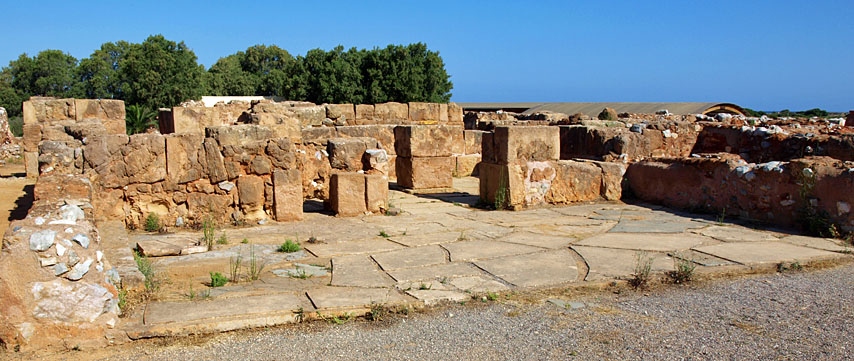The ancient Minoan civilization, flourishing from approximately 3000 to 1450 BCE on the island of Crete, represents one of the earliest advanced civilizations in Europe. Known for its sophisticated architecture, vibrant frescoes, and intricate art, the Minoans left behind remarkable landmarks that offer a glimpse into their advanced society and way of life. These iconic landmarks continue to captivate historians, archaeologists, and visitors, revealing the grandeur and complexity of Minoan culture.
Knossos Palace
Perhaps the most famous landmark of the Minoan civilization is the Palace of Knossos. Located near the modern city of Heraklion, Knossos is often referred to as Europe’s oldest city. The palace complex, sprawling over 20,000 square meters, was the political and ceremonial center of Minoan life. Its intricate layout includes royal chambers, grand courtyards, storage rooms, and religious sanctuaries.
The palace is also renowned for its vibrant frescoes, which depict scenes of nature, religious rituals, and daily life, providing valuable insights into Minoan culture and aesthetics. The “Bull-Leaping” fresco, in particular, is iconic, showcasing the Minoan sport that involved acrobatic leaps over bulls. The architectural features of Knossos, such as advanced plumbing systems and multi-story buildings, highlight the Minoans’ engineering prowess.
Phaistos Palace
Another significant Minoan landmark is the Palace of Phaistos, located in the south-central region of Crete. Phaistos was a major administrative and economic center. The palace, situated on a hill overlooking the fertile Mesara Plain, provides a strategic view of the surrounding area, indicating its importance in controlling agricultural production and trade routes.
Excavations at Phaistos have uncovered numerous artifacts, including the famous Phaistos Disc, a clay tablet inscribed with a unique script that remains undeciphered. The palace’s architectural design is notable for its grand staircases, expansive courtyards, and storage areas, reflecting the complex social and economic structure of Minoan society.
Malia Palace
The Palace of Malia, located on the northern coast of Crete, is another key site of the Minoan civilization. Malia is known for its extensive ruins, which include residential quarters, workshops, and religious areas. The palace’s layout, with its large central courtyard, suggests it was a hub for social and religious gatherings.
One of the most striking features of Malia is the discovery of a gold artifact known as the “Bee Pendant,” which exemplifies the Minoans’ exceptional craftsmanship and artistic skill. The palace complex also includes unique architectural elements, such as the “Hypostyle Hall,” which is characterized by its column-supported roof, showcasing the Minoans’ innovative building techniques.
Zakros Palace
Zakros Palace, situated on the eastern coast of Crete, provides further evidence of the Minoans’ far-reaching trade networks. The site is located near a natural harbor, facilitating trade with other ancient civilizations across the Mediterranean. Zakros is the smallest of the four main Minoan palaces but is significant for its well-preserved ruins.
The palace complex includes a variety of rooms, such as storage facilities, workshops, and residential quarters. Notably, the discovery of numerous artifacts, including pottery, tools, and luxury items, suggests Zakros was an important center for commerce and craft production. The “Hall of Ceremonies” and the “Room of the Cistern” are particularly noteworthy for their architectural and functional significance.
Gournia
Gournia, often referred to as the “Minoan Pompeii,” is a well-preserved Minoan town that provides a unique glimpse into everyday life during the Minoan period. Located on the northeastern coast of Crete, Gournia’s layout includes narrow streets, residential buildings, and communal areas, reflecting the urban planning and social organization of the Minoans.
Excavations at Gournia have revealed a variety of artifacts, including pottery, tools, and jewelry, indicating the town’s role as a bustling community engaged in various trades and crafts. The presence of a small palace or administrative building suggests Gournia also held regional administrative functions.
Conclusion
The iconic landmarks of the ancient Minoan civilization, from the grand palaces of Knossos, Phaistos, and Malia to the bustling town of Gournia and the strategic site of Zakros, offer profound insights into one of the earliest advanced civilizations in Europe. These sites reflect the Minoans’ sophisticated architecture, complex social structures, and vibrant cultural life. Visiting these landmarks allows one to step back in time and experience the grandeur and ingenuity of the Minoan civilization, a true marvel of the ancient world.


